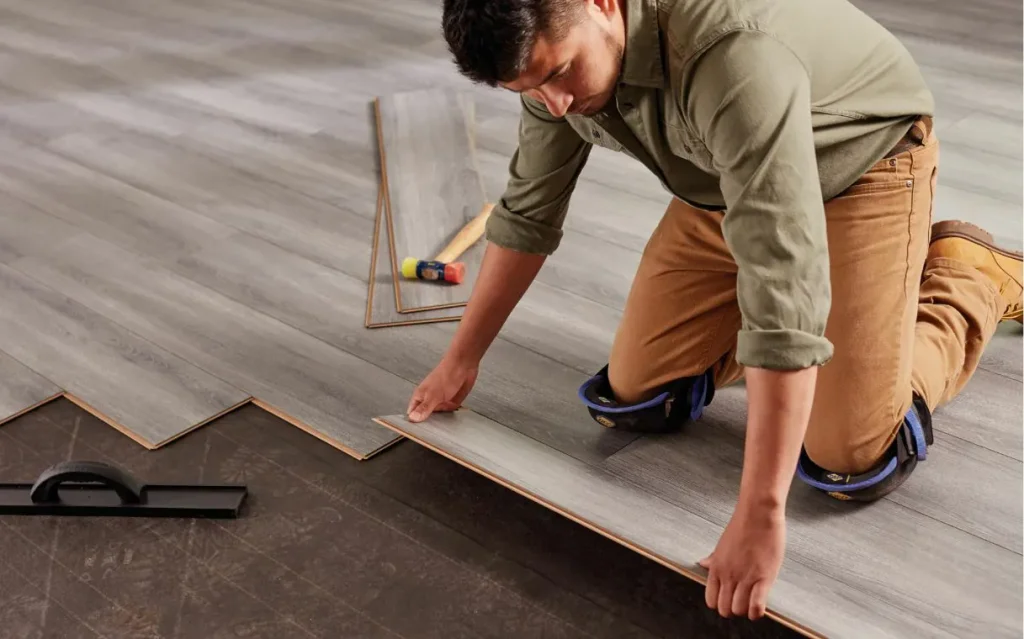Home is where the heart is, but it’s also where we spend most of our time. It’s no surprise then that homeowners are always looking for ways to improve their living spaces. One way to do this is by installing laminate flooring – a popular choice among homeowners due to its durability, affordability, and easy maintenance.
However, choosing the right type of laminate floor can be a daunting task as there are many factors to consider. In this article, we will explore how to choose the right laminate floor for your home so that you can make an informed decision and enjoy the benefits of this versatile flooring option.
When it comes to choosing the right laminate floor for your home, there are several things you need to keep in mind.
First and foremost, you need to consider the location of the room where you want to install it. Different rooms have different requirements when it comes to flooring – a kitchen or bathroom may require waterproof or water-resistant options while a bedroom or living room may not have such demands.
Additionally, factors like foot traffic and exposure to sunlight should also be taken into account as they can affect the durability and appearance of your laminate floors over time.
By taking these factors into consideration, you’ll be able to select a laminate floor that meets your needs while enhancing the overall aesthetic appeal of your home.
Consider the Location of the Room
The selection of laminated flooring for a particular room should take into consideration the location of the space within the home. One important factor to consider is moisture. Rooms that are susceptible to water exposure, such as bathrooms, laundry rooms, and kitchens, require laminated flooring with high water resistance.
In contrast, rooms with less moisture exposure can have lower water-resistant laminated floors. Temperature fluctuations are another environmental factor to consider when choosing laminated flooring. Areas of the home that experience extreme temperatures, such as basements or attics, require a more durable laminate floor that can withstand these fluctuations without warping or buckling.
By considering both moisture and temperature levels in each room where you plan to install your new floor, you can choose a type of laminate flooring that will best suit your needs and ensure longevity and durability for years to come.
Choose the Right Thickness
Optimal thickness is a critical consideration when selecting laminated flooring, as it influences both durability and appearance. The following three factors should be considered when choosing the right thickness:
1. Traffic: High-traffic areas such as hallways and entryways require thicker laminates to withstand wear and tear.
2. Subfloor: The condition of the subfloor affects the choice of laminate thickness. If the subfloor is uneven or damaged, a thicker laminate can provide more stability.
3. Sound insulation: Thicker laminates provide better sound insulation than thinner ones, making them ideal for apartments or shared living spaces.
In addition to these considerations, manufacturers often offer different levels of thickness in their laminated flooring products. It’s important to select a laminate that meets your specific needs while keeping in mind that thicker options tend to be more durable but also costlier than thinner options.
By taking all these factors into account, you’ll be able to choose the optimal thickness for your home’s laminated flooring needs.
Choosing the right thickness for your laminated floor requires careful consideration of various factors such as traffic patterns, subfloor quality, sound insulation needs and budget constraints. While thicker laminates are generally more durable, they may not always be necessary for every room in your home. Ultimately, by following these guidelines and working with reputable manufacturers you’ll ensure that your new floor will provide both functionality and aesthetic appeal for years to come!
Select the Best Design and Texture
Selecting the appropriate design and texture is a crucial aspect to consider when looking for laminated flooring that caters to both functional and aesthetic requirements, ultimately creating an emotionally satisfying environment.
The design of the laminated floor should complement the existing decor while still being versatile enough to adapt to future changes in style. A popular trend in laminated flooring is natural wood patterns or stone designs, which can be very convincing and add a touch of authenticity to any room.
The texture of the laminated floor also plays a significant role in its overall appearance and function. Textured finishes, such as hand-scraped or wire-brushed designs, are becoming increasingly popular due to their ability to hide scratches and dents while adding depth and character. Smooth finishes are another option that provides a sleeker look but may require more maintenance over time.
Ultimately, selecting the right design and texture for your laminated floor comes down to personal preference, budget, and lifestyle needs.
Frequently Asked Questions
How do I clean and maintain a laminated floor?
To clean and maintain laminated floors, use a microfiber mop or vacuum with a hard floor attachment. Avoid using excessive water or harsh chemicals. Wipe up spills immediately and use furniture pads to prevent scratches.
Can laminated flooring be installed over existing flooring?
Laminated flooring can be installed over existing flooring, provided that the surface is clean and level. The installation process involves laying an underlayment, followed by the laminated planks, which are then locked together for a secure fit.
How does laminated flooring compare to hardwood or tile flooring in terms of durability?
Laminated flooring is highly durable and can withstand heavy foot traffic, making it comparable to hardwood or tile flooring. However, its durability may vary depending on the quality of the materials used and the level of maintenance provided.
Are there any environmental concerns or considerations with laminated flooring?
Laminated flooring is made from wood composite materials and is considered an eco-friendly option. However, some laminates contain high levels of formaldehyde which can compromise indoor air quality. It’s important to choose products with low VOC emissions.
How do I know if the laminated flooring I choose is safe for my home and family?
To ensure safety, look for laminated flooring with low VOC emissions and certification from reputable organizations. Verify that it meets industry standards for durability and slip resistance. Review the manufacturer’s warranty and installation instructions to avoid potential health hazards.
Conclusion
When it comes to choosing the right laminated floor for your home, there are several factors to consider. Firstly, you need to think about the location of the room where you want to install the flooring. For instance, if it is an area with high traffic such as a hallway or living room, then you should choose a thicker laminate that can withstand wear and tear.
Another important consideration is the thickness of the laminate itself. The thicker the laminate, the more durable it will be. A good rule of thumb is to choose a laminate that is at least 8mm thick for areas with moderate traffic and 10mm or more for high-traffic areas.
Lastly, selecting the best design and texture can make all the difference in creating a cohesive look throughout your home. With so many options available, take time to consider your personal style and décor when making this decision.
According to recent statistics, up to 90% of homeowners prefer laminate floors over other types of flooring due to their durability and affordability. This statistic evokes emotion because it shows that many people have already made this choice for their homes and highlights how popular laminate floors have become in recent years.
Overall, selecting the right laminate flooring requires careful consideration of various factors including location, thickness, design, and texture. By taking these factors into account along with personal style preferences, you can find the perfect fit for your home while enjoying its benefits like cost-effectiveness and durability.
How To Install Laminated Wood Floors & Pros & Cons Of Doing It Yourself



